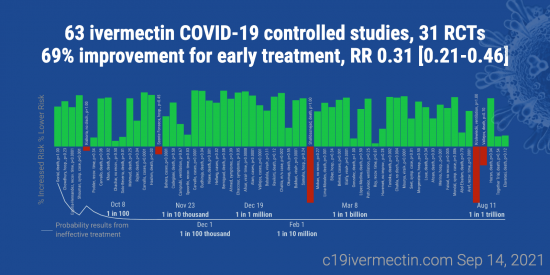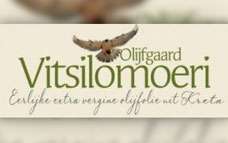Fries Foar Frijhiid
Well-known member
Astaxathine heeft een vergelijkbare werking en herkomst als avermectine en kan de BBB doordringen, waarschijnlijk IVM en AVM dus ook.
With each passing year, it becomes increasingly important to protect your vital organs, especially your brain.
What from? Free radicals and other substances that can cause oxidative damage and faster cellular aging.
The best way to get this protection is from antioxidant nutrients found in healthy foods whenever possible. However, to be effective, the nutrients must be able to cross through what are known as your blood-brain and blood-retinal barriers.
Your blood-brain barrier, or the tight junction of endothelial cells inside your brain’s capillaries, separates your brain’s blood vessels from your brain tissue. It allows oxygen and glucose to cross for proper functioning but restricts other molecules to protect your brain cells.
Similarly, your blood-retinal barrier safeguards the tissue of your eye’s retina.
These important barriers defend your brain, central nervous system and eyes against unwanted substances, like toxins and pathogens, that may be in your blood. They also help maintain constant levels of nutrients, hormones and water.
However, only certain nutrients can pass through your blood-brain and blood-retinal barriers. Many important antioxidants that provide protection against free radicals and other damaging oxygen molecules can’t slip through easily.
Right before the turn of the 21st century, a researcher at Johns Hopkins University confirmed an important trait of what may be the most significant antioxidant ever discovered – astaxanthin.
Astaxanthin was indeed able to cross both the blood-brain and blood-retinal barriers to enter the brain and eye tissue – a rare ability for any antioxidant.

What else makes astaxanthin stand out among other antioxidants besides its unique ability to cross your blood-brain and blood-retinal barriers?
Astaxanthin is related to beta-carotene, lutein and canthaxanthin – all very powerful carotenoid antioxidants on their own. However, because of its unique molecular structure, astaxanthin is even more potent and versatile in its actions, including these 7 key differences from other antioxidants:
Plus, when compared to other nutrients and antioxidants that scavenge free radicals and neutralize potentially damaging singlet oxygen in your cells and tissues, astaxanthin really excels.

By helping to scavenge, or quench, these highly reactive oxygen molecules, you can help prevent the damaging oxidative effects of ROS on your cells and especially your mitochondria, the little energy factories inside your cells.*
Astaxanthin has been shown to be more effective than other antioxidant nutrients at this singlet oxygen quenching by being up to:

Oxidation in your body is much like what happens to a piece of metal when it rusts. When oxidation happens in your body, it can lead to the generation of even more free radicals – something you don’t want.
Free radical damage and oxidation can show up as inflammation in your body, lines and wrinkles on your skin, and even loss of muscle tone and flexibility.
Oxidation can also damage your cells, tissues, organs and your genetic material, DNA
Typically, your body produces antioxidants to help quell the free radicals created inside your body during breathing and other normal functions, like digestion.
However, when you pile on extra insults from pollution, EMFs, stress, processed foods, and toxins like herbicides and pesticides, your body’s own defenses can become overwhelmed.
Remember, being metabolically inflexible and not being able to burn fat as your primary fuel is a major source of oxidative stress. You do have control, however. By changing your food choices, you can start burning fat for fuel.
Once you are metabolically flexible, a powerful antioxidant like astaxanthin has been shown to effectively scavenge free radicals from your tissues and help reduce singlet oxygen, the especially damaging type of oxidation.*

Let’s take a closer look at some of these important potential benefits...
This is no small feat... and it provides exciting potential for unique brain and nerve benefits.*
Once it crosses over this protective barrier, astaxanthin saturates and protects your brain cells against oxidative damage.*
You may be wondering... how much is too much astaxanthin? A human study using 20 mg over a four-week study reported no adverse effects.* I believe astaxanthin is one antioxidant you can use at higher levels for increased potential benefits without adverse effects... just like we’re seeing with normal, age-related forgetfulness.*
This test, the CRP, measures a substance called C-reactive protein in your blood. CRP is produced in your liver and coronary arteries and is released into your bloodstream whenever inflammation is present.
While inflammation is a normal healthy response to an insult or injury, you want it to do its job and then subside. You don’t want it to continue, out of control in your body.
In the first comprehensive study to examine astaxanthin’s ability to act on immune response, inflammation and oxidative damage in humans, healthy young participants received either 0, 2, or 8 mg of astaxanthin.
A daily dose of as little as 2 mg reduced CRP levels by 20% in just eight weeks.* Plus, astaxanthin dramatically decreased one DNA damage biomarker after only four weeks.*
Another study showed astaxanthin helped 43% of participants maintain their CRP levels in the average risk range. This suggests astaxanthin may be helpful in promoting a normal inflammatory response and decreasing your body’s need to produce CRP.*
A key potential benefit of astaxanthin for your heart and vascular system involves its ability to help reduce oxidative stress.* Other studies suggest astaxanthin may help:

What if there was something that could help increase your strength and vitality as well as reduce your muscle and joint soreness afterward?
Astaxanthin can help do all this thanks to its ability to protect mitochondrial and cellular membranes while supporting an already healthy inflammatory response in your body.*
It’s also been shown to improve athletic performance and promote muscle endurance, which should be no surprise, considering the abundance of mitochondria in muscle tissues.*
As you age, oxidative damage can cripple your red blood cells’ ability to oxygenate your tissues. Because of astaxanthin’s ability to benefit your cell membranes, this can positively impact the health of your red blood cells.*
In a double-blind clinical trial with 32 healthy adults, ages 50 to 69, subjects took either 6 mg or 12 mg of astaxanthin a day for 12 weeks. Both dosage levels affected oxidative damage to red blood cells.*
Another 10-day study with dose levels of 6 mg per day showed significantly improved already healthy blood flow.*
Better blood flow improves oxygen delivery throughout your body, and that can make all the difference when you and your muscles are fatigued.* Astaxanthin also supports mobility.
Take tennis, for example... The repetitive hitting of tennis balls can lead to issues with grip strength.
In a study with tennis players, the astaxanthin group took 12 mg each day for eight weeks while the other group took only a placebo.
For those taking astaxanthin, their grip strength almost doubled in only eight weeks. The average increase was 93%. *
Astaxanthin, in particular, shows exciting promise for some of the most common age-related eye changes.
Keep in mind, astaxanthin can cross your blood-retinal barrier, unlike other antioxidants.
This feature may be key to astaxanthin’s actions... Rat studies suggest that supplementing with astaxanthin may provide neuroprotective effects against retinal damage.*
Astaxanthin appears to protect retinal cells against oxidative stress, and it was shown to significantly manage destructive new blood vessel growth.*
Here’s a quick summary of some revealing studies of astaxanthin on vision quality, especially when using a computer or other visual display:

When you expose your skin to sunlight, the sun’s ultraviolet or UVA rays produce free radicals, which, in turn, can damage your skin’s collagen. This can cause skin sagging, wrinkles and age spots.
And just growing old leads to changes, too, like a loss of skin elasticity and a greater tendency for your skin’s top layer to peel.
This telltale sign of aging facial skin, known as corneocyte desquamation, can leave your skin looking older and pale.
According to several studies, astaxanthin may help with all of these changes, as it’s been shown to reduce oxidative stress and help reduce the appearance of changes in the skin surface associated with skin aging.*
So, how much astaxanthin was needed to produce these effects? All of these studies used dosages between 4 and 8 mg of astaxanthin from the microalgae Haematococcus pluvialis.
However, many people aren’t getting the nutrients their bodies need either because of their food choices or because food can’t provide enough of certain nutrients.
Take wild-caught Alaskan Sockeye salmon for example, the very best animal source of astaxanthin.
Astaxanthin is a naturally occurring fat-soluble carotenoid found in salmon, shrimp, lobster, crab, krill and certain algae. Actually, it’s what gives these sea animals their brilliant orange coloring.
Its highest concentration is found in the muscles of wild salmon (not farmed salmon). Researchers believe that’s no accident... High levels may be needed to provide the power for salmon to swim upstream during spawning.
The other source of naturally occurring astaxanthin is one that few people know about... a very unique type of microalgae called Haematococcus pluvialis. This is how sea creatures like salmon and krill get their red pigmentation – by eating this microalga.
You can get naturally occurring astaxanthin two different ways: Eat a generous serving of wild sockeye salmon every day or get it the way salmon do – find and consume the microalgae itself.
In reality, you’re not likely to succeed at either option. I doubt you relish the idea of hunting down and eating microalgae. If you chose the wild sockeye salmon option, you’d have to eat a 6-ounce serving every day just to get a 3.6 mg dose.
And don’t even think about getting your astaxanthin from farmed salmon. Farmed salmon contains 400 times less astaxanthin than wild salmon and are fed with petro-chemically derived astaxanthin, not natural astaxanthin from microalgae.
Since many of the more recent studies suggest taking a higher dose for enhanced potential benefits, I recommend getting your astaxanthin from a high-quality supplement instead. It’s far easier and much more cost-effective.

Until recently, even high-quality astaxanthin was only produced by conventional means.
Fortunately, my team has been able to procure USDA Certified Organic astaxanthin. Our Organic Astaxanthin is grown under conditions that satisfy the tough auditing of the USDA National Organic Program (NOP), meeting all the requirements for minerals, nutrients and non-required protectants.
This means you are getting high-quality organic astaxanthin that isn't contaminated with herbicides, pesticides and fertilizers not approved by the NOP.
And our supplier takes this one step further. They grow the organic astaxanthin in glass tubes to protect against environmental contamination and connect the glass tubes with non-PVC flexible tubing.
Typically, plasticizers are added to PVC to make it flexible. These plasticizers are often toxic endocrine disruptors that can leach into the algae media and contaminate the astaxanthin.
So much goes into the procurement of high-quality organic astaxanthin. The last thing we’d want to see are added plasticizers. We make sure you get nothing but the cleanest and purest astaxanthin available today – our Organic Astaxanthin produced in sealed tubes.
Natural astaxanthin from H. pluvialis makes up less than 1% of commercially produced astaxanthin, so you can’t be too careful when shopping for astaxanthin.
What makes the astaxanthin from H. pluvialis so superior? Synthetic astaxanthin has 20 times lower antioxidant capacity than microalgae-derived astaxanthin.
To save you the work, my team and I researched some of the best astaxanthin formulas out there to bring you our Organic Astaxanthin in two dosage levels – 4 mg and 12 mg.
Even today, many people still don’t know about and fully appreciate the key role astaxanthin can play in how you feel and look as your cells age.
Astaxanthin from the microalgae Haematococcus pluvialis can help:

 products.mercolamarket.com
products.mercolamarket.com
With each passing year, it becomes increasingly important to protect your vital organs, especially your brain.
What from? Free radicals and other substances that can cause oxidative damage and faster cellular aging.
The best way to get this protection is from antioxidant nutrients found in healthy foods whenever possible. However, to be effective, the nutrients must be able to cross through what are known as your blood-brain and blood-retinal barriers.
Your blood-brain barrier, or the tight junction of endothelial cells inside your brain’s capillaries, separates your brain’s blood vessels from your brain tissue. It allows oxygen and glucose to cross for proper functioning but restricts other molecules to protect your brain cells.
Similarly, your blood-retinal barrier safeguards the tissue of your eye’s retina.
These important barriers defend your brain, central nervous system and eyes against unwanted substances, like toxins and pathogens, that may be in your blood. They also help maintain constant levels of nutrients, hormones and water.
However, only certain nutrients can pass through your blood-brain and blood-retinal barriers. Many important antioxidants that provide protection against free radicals and other damaging oxygen molecules can’t slip through easily.
Right before the turn of the 21st century, a researcher at Johns Hopkins University confirmed an important trait of what may be the most significant antioxidant ever discovered – astaxanthin.
Astaxanthin was indeed able to cross both the blood-brain and blood-retinal barriers to enter the brain and eye tissue – a rare ability for any antioxidant.
How This Little-Known Carotenoid Offers Exceptional Support

What else makes astaxanthin stand out among other antioxidants besides its unique ability to cross your blood-brain and blood-retinal barriers?
Astaxanthin is related to beta-carotene, lutein and canthaxanthin – all very powerful carotenoid antioxidants on their own. However, because of its unique molecular structure, astaxanthin is even more potent and versatile in its actions, including these 7 key differences from other antioxidants:
- It has far more electrons to donate to neutralize free radicals than most other antioxidants, allowing it to remain active and intact longer.*
- It can handle multiple free radicals, sometimes more than 19 at one time, unlike most other antioxidants that can typically deal with only one at a time.*
- It can protect both water- and fat-soluble parts of your cells, including your cells’ mitochondria.*
- It cannot act as a pro-oxidant, or cause oxidation, like many antioxidants, even at higher doses.*
- It acts on at least five different inflammation pathways, supporting your body’s already healthy normal inflammatory response.*
- Because it is lipid-soluble and larger and longer than other carotenoids, it can become part of your cell membrane and span its entire thickness to help stabilize and protect both the inner and outer cell membrane from oxidative damage.*
Plus, when compared to other nutrients and antioxidants that scavenge free radicals and neutralize potentially damaging singlet oxygen in your cells and tissues, astaxanthin really excels.

Up to 6,000 Times the Quenching Power of Other Well-Known Antioxidants
Singlet oxygen is a high-energy form of oxygen and one of the reactive oxygen species (ROS) linked to cardiovascular effects.By helping to scavenge, or quench, these highly reactive oxygen molecules, you can help prevent the damaging oxidative effects of ROS on your cells and especially your mitochondria, the little energy factories inside your cells.*
Astaxanthin has been shown to be more effective than other antioxidant nutrients at this singlet oxygen quenching by being up to:
- 6,000 times greater than vitamin C.*
- 800 times stronger than CoQ10.*
- 500 times more powerful than vitamin E.*
- 10 times stronger than beta-carotene.*
- 4 times more effective than lutein.*

Why Potent Antioxidant Power Is a Must-Have in Today’s World
All this antioxidant power must mean something for your health and comfort, right?Oxidation in your body is much like what happens to a piece of metal when it rusts. When oxidation happens in your body, it can lead to the generation of even more free radicals – something you don’t want.
Free radical damage and oxidation can show up as inflammation in your body, lines and wrinkles on your skin, and even loss of muscle tone and flexibility.
Oxidation can also damage your cells, tissues, organs and your genetic material, DNA
Typically, your body produces antioxidants to help quell the free radicals created inside your body during breathing and other normal functions, like digestion.
However, when you pile on extra insults from pollution, EMFs, stress, processed foods, and toxins like herbicides and pesticides, your body’s own defenses can become overwhelmed.
Remember, being metabolically inflexible and not being able to burn fat as your primary fuel is a major source of oxidative stress. You do have control, however. By changing your food choices, you can start burning fat for fuel.
Once you are metabolically flexible, a powerful antioxidant like astaxanthin has been shown to effectively scavenge free radicals from your tissues and help reduce singlet oxygen, the especially damaging type of oxidation.*

10 Ways Astaxanthin Can Help You Take Control of Your Health®
Because astaxanthin can reach just about every cell in your body and help protect the membrane and internal systems of your mitochondria, it may also help:- Boost cellular energy production.*
- Reduce oxidative damage to mitochondria and cellular DNA.*
- Promote an already healthy normal inflammatory response, potentially leading to greater comfort, flexibility and mobility.*
- Support immune function and cellular health.*
- Cognitive and psychomotor function*
- Promote healthy blood glucose levels already in the normal range.*
- Supports your eye’s health and energy levels*
- Maintain a youthful appearance, maintain skin elasticity and reduce the visible signs of skin aging.*
- Promote healthy blood lipid levels already in the normal range.*
- Prevent joint discomfort following exercise.*
Let’s take a closer look at some of these important potential benefits...
Astaxanthin’s Ability to Cross Your Blood-Brain Barrier Offers Potential Benefits for Your Cognitive Health*
As mentioned earlier, astaxanthin is one of the few antioxidants that can effectively cross your blood-brain barrier.This is no small feat... and it provides exciting potential for unique brain and nerve benefits.*
Once it crosses over this protective barrier, astaxanthin saturates and protects your brain cells against oxidative damage.*
You may be wondering... how much is too much astaxanthin? A human study using 20 mg over a four-week study reported no adverse effects.* I believe astaxanthin is one antioxidant you can use at higher levels for increased potential benefits without adverse effects... just like we’re seeing with normal, age-related forgetfulness.*
Why Astaxanthin is Right for Your Heart, Veins and Arteries
Many people in the know rely on a certain blood test to keep them appraised of their cardiovascular health status...This test, the CRP, measures a substance called C-reactive protein in your blood. CRP is produced in your liver and coronary arteries and is released into your bloodstream whenever inflammation is present.
While inflammation is a normal healthy response to an insult or injury, you want it to do its job and then subside. You don’t want it to continue, out of control in your body.
In the first comprehensive study to examine astaxanthin’s ability to act on immune response, inflammation and oxidative damage in humans, healthy young participants received either 0, 2, or 8 mg of astaxanthin.
A daily dose of as little as 2 mg reduced CRP levels by 20% in just eight weeks.* Plus, astaxanthin dramatically decreased one DNA damage biomarker after only four weeks.*
Another study showed astaxanthin helped 43% of participants maintain their CRP levels in the average risk range. This suggests astaxanthin may be helpful in promoting a normal inflammatory response and decreasing your body’s need to produce CRP.*
A key potential benefit of astaxanthin for your heart and vascular system involves its ability to help reduce oxidative stress.* Other studies suggest astaxanthin may help:
- Protect vascular lining throughout your cardiovascular system.*
- Promote flexible and pliable arteries.*
- Promote healthy blood flow.*

Why Astaxanthin May Be Your Go-To for Fast Recovery
Exercise, or even working in your garden, can take its toll on your body at any age, especially if you don’t do it regularly.What if there was something that could help increase your strength and vitality as well as reduce your muscle and joint soreness afterward?
Astaxanthin can help do all this thanks to its ability to protect mitochondrial and cellular membranes while supporting an already healthy inflammatory response in your body.*
It’s also been shown to improve athletic performance and promote muscle endurance, which should be no surprise, considering the abundance of mitochondria in muscle tissues.*
As you age, oxidative damage can cripple your red blood cells’ ability to oxygenate your tissues. Because of astaxanthin’s ability to benefit your cell membranes, this can positively impact the health of your red blood cells.*
In a double-blind clinical trial with 32 healthy adults, ages 50 to 69, subjects took either 6 mg or 12 mg of astaxanthin a day for 12 weeks. Both dosage levels affected oxidative damage to red blood cells.*
Another 10-day study with dose levels of 6 mg per day showed significantly improved already healthy blood flow.*
Better blood flow improves oxygen delivery throughout your body, and that can make all the difference when you and your muscles are fatigued.* Astaxanthin also supports mobility.
Take tennis, for example... The repetitive hitting of tennis balls can lead to issues with grip strength.
In a study with tennis players, the astaxanthin group took 12 mg each day for eight weeks while the other group took only a placebo.
For those taking astaxanthin, their grip strength almost doubled in only eight weeks. The average increase was 93%. *
How Astaxanthin Offers Potential Benefits for Your Eyes
Your retina contains two carotenoids that are very similar to astaxanthin: lutein and zeaxanthin.Astaxanthin, in particular, shows exciting promise for some of the most common age-related eye changes.
Keep in mind, astaxanthin can cross your blood-retinal barrier, unlike other antioxidants.
This feature may be key to astaxanthin’s actions... Rat studies suggest that supplementing with astaxanthin may provide neuroprotective effects against retinal damage.*
Astaxanthin appears to protect retinal cells against oxidative stress, and it was shown to significantly manage destructive new blood vessel growth.*
Here’s a quick summary of some revealing studies of astaxanthin on vision quality, especially when using a computer or other visual display:
- 6 mg a day for four weeks improved computer and display screen visual fatigue symptoms, including dimness of sight and stiff shoulders and back.*
- 6 mg a day for four weeks improved symptoms of eye strain and blurred vision, occasional double vision, and general headache.*
- 5 mg a day for four weeks improved visual display terminal workers’ ability to refocus their eyes, or accommodation amplitude during work.*
- 12 mg a day for four weeks significantly improved both eye strain and ability to refocus during close up work and computers.*

Help Protect and Rejuvenate Your Skin From the Inside Out With Astaxanthin
While I’m a strong advocate of controlled sun exposure for your body’s natural vitamin D production, it’s no secret that getting too much sun can cause photoaging and make your skin look older.When you expose your skin to sunlight, the sun’s ultraviolet or UVA rays produce free radicals, which, in turn, can damage your skin’s collagen. This can cause skin sagging, wrinkles and age spots.
And just growing old leads to changes, too, like a loss of skin elasticity and a greater tendency for your skin’s top layer to peel.
This telltale sign of aging facial skin, known as corneocyte desquamation, can leave your skin looking older and pale.
According to several studies, astaxanthin may help with all of these changes, as it’s been shown to reduce oxidative stress and help reduce the appearance of changes in the skin surface associated with skin aging.*
So, how much astaxanthin was needed to produce these effects? All of these studies used dosages between 4 and 8 mg of astaxanthin from the microalgae Haematococcus pluvialis.
Where to Find the Best Source of Astaxanthin
As I said earlier, my preferred way to get antioxidants and other important nutrients is from fresh, organically grown nutrient-dense food.However, many people aren’t getting the nutrients their bodies need either because of their food choices or because food can’t provide enough of certain nutrients.
Take wild-caught Alaskan Sockeye salmon for example, the very best animal source of astaxanthin.
Astaxanthin is a naturally occurring fat-soluble carotenoid found in salmon, shrimp, lobster, crab, krill and certain algae. Actually, it’s what gives these sea animals their brilliant orange coloring.
Its highest concentration is found in the muscles of wild salmon (not farmed salmon). Researchers believe that’s no accident... High levels may be needed to provide the power for salmon to swim upstream during spawning.
The other source of naturally occurring astaxanthin is one that few people know about... a very unique type of microalgae called Haematococcus pluvialis. This is how sea creatures like salmon and krill get their red pigmentation – by eating this microalga.
You can get naturally occurring astaxanthin two different ways: Eat a generous serving of wild sockeye salmon every day or get it the way salmon do – find and consume the microalgae itself.
In reality, you’re not likely to succeed at either option. I doubt you relish the idea of hunting down and eating microalgae. If you chose the wild sockeye salmon option, you’d have to eat a 6-ounce serving every day just to get a 3.6 mg dose.
And don’t even think about getting your astaxanthin from farmed salmon. Farmed salmon contains 400 times less astaxanthin than wild salmon and are fed with petro-chemically derived astaxanthin, not natural astaxanthin from microalgae.
Since many of the more recent studies suggest taking a higher dose for enhanced potential benefits, I recommend getting your astaxanthin from a high-quality supplement instead. It’s far easier and much more cost-effective.
Organic Astaxanthin for all Your Antioxidant Needs

Until recently, even high-quality astaxanthin was only produced by conventional means.
Fortunately, my team has been able to procure USDA Certified Organic astaxanthin. Our Organic Astaxanthin is grown under conditions that satisfy the tough auditing of the USDA National Organic Program (NOP), meeting all the requirements for minerals, nutrients and non-required protectants.
This means you are getting high-quality organic astaxanthin that isn't contaminated with herbicides, pesticides and fertilizers not approved by the NOP.
And our supplier takes this one step further. They grow the organic astaxanthin in glass tubes to protect against environmental contamination and connect the glass tubes with non-PVC flexible tubing.
Typically, plasticizers are added to PVC to make it flexible. These plasticizers are often toxic endocrine disruptors that can leach into the algae media and contaminate the astaxanthin.
So much goes into the procurement of high-quality organic astaxanthin. The last thing we’d want to see are added plasticizers. We make sure you get nothing but the cleanest and purest astaxanthin available today – our Organic Astaxanthin produced in sealed tubes.
What to Look for When Buying Astaxanthin
When shopping for astaxanthin, I recommend keeping four important criteria in mind:- The astaxanthin formula is created from the marine microalgae, H. pluvialis, and not some form of fungus, or other less effective form.
- The manufacturer guarantees stability and efficacy of the formula.
- The formula supplies sufficient astaxanthin – at least a 4 mg minimum serving size, so you may take fewer capsules each day.
- Look for organic astaxanthin grown in controlled environments for the cleanest and purest form.
Natural astaxanthin from H. pluvialis makes up less than 1% of commercially produced astaxanthin, so you can’t be too careful when shopping for astaxanthin.
What makes the astaxanthin from H. pluvialis so superior? Synthetic astaxanthin has 20 times lower antioxidant capacity than microalgae-derived astaxanthin.
To save you the work, my team and I researched some of the best astaxanthin formulas out there to bring you our Organic Astaxanthin in two dosage levels – 4 mg and 12 mg.
How Our Organic Astaxanthin Compares to Others on the Market
| What to Look For | Dr. Mercola Organic Astaxanthin | Other Formulas |
|---|---|---|
| Created from marine microalgae? | Yes – Formula created using Haematococcus pluvialis microalgae. | Not all astaxanthin formulas use microalgae nutrients. |
| Contains some sort of oil to help maximize absorption? | Yes – For optimal absorption, this formula uses Organic Olive Oil. | Some astaxanthin formulas don't include any sort of oil to help maximize absorption. |
| Does the manufacturer guarantee stability and efficacy of the product? | Yes – Manufacturer's processes create a high-quality product with long-term stability (24 months) and efficacy. Plus, manufacturer uses “oil” instead of powder to enhance stability of the astaxanthin. | To date, I've not seen any other astaxanthin manufacturer that compares favorably to this one when it comes to product stability and efficacy. Most astaxanthin manufacturers use astaxanthin powder (instead of “oil”), which may cause costly formulation stability challenges. |
| Manufacturer avoids chemical solvents and preservatives in their formulation process? | Yes – Formula is untouched by chemical solvents and is free from preservatives, impurities and residues. | Not all astaxanthin formulas are free from synthetic chemical solvents and preservatives. |
| Serving size of at least 4 mg? | Yes – Our Organic Astaxanthin comes in 4 mg and 12 mg capsules. | Many astaxanthin formulas come in a 4 mg serving size. However, many use 1 mg capsules, requiring you to take more capsules. |
Protect and Protect Your Overall Health with Organic Astaxanthin Today
In the approximately 80 years, scientists have known about astaxanthin, its benefits continue to exceed expectations.Even today, many people still don’t know about and fully appreciate the key role astaxanthin can play in how you feel and look as your cells age.
Astaxanthin from the microalgae Haematococcus pluvialis can help:
- Boost cellular energy production.*
- Reduce oxidative damage to mitochondria and cellular DNA.*
- Promote an already healthy normal inflammatory response, potentially leading to greater comfort, flexibility, and mobility.*
- Support immune function and cellular health.*
- Cognitive and psychomotor function*
- Promote healthy blood glucose levels already in the normal range.*
- Support your eye’s health and energy levels.*
- Maintain a youthful appearance, maintain skin elasticity, and reduce the visible signs of skin aging.*
- Promote healthy blood lipid levels already in the normal range.*
- Prevent joint discomfort following exercise.*

Astaxanthin Supplement – USDA Certified Organic
Our USDA Certified Organic Astaxanthin is a powerhouse antioxidant that uses organic olive oil as base to help protect your cells, tissues, organs and DNA.















